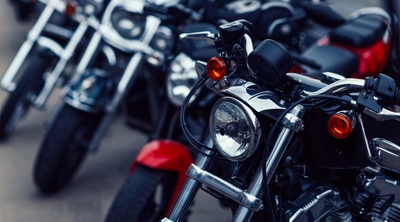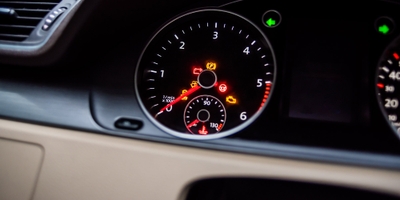Motorcycle storage guide
3 min read
Motorcycles are an investment, and it’s important to understand the benefits of proper motorcycle storage. Generally, garages offer the most protection from vandalism and weather and may prevent motorcycle theft. They’re also the best long-term motorcycle storage solution. However, if a garage isn’t available, tarps can be a great tool for keeping motorcycles safe in outdoor conditions.
Riders may also look into other protective measures, such as wheel locks or alarms. Doing so not only keeps the bike intact while in storage but also prevents potential future repairs or replacement due to weather exposure damage.
What is winter motorcycle storage and why is it important?
Winter can be challenging for motorcycle owners looking to keep their bikes in working order. Wintery conditions can cause an increase in wear-and-tear of certain components, which could become costly to replace or repair. Store your motorcycle out of extreme weather elements as much as you can to help preserve your ride during colder months. Additionally, regular motorcycle maintenance may help you check for key areas that are at risk of rusting.
When storing your bike, avoid cancelling your motorcycle insurance in order to stay protected against theft, vandalism, fire, and weather-related issues that could damage your motorcycle while in storage.
If you must ride in the snow and ice, learn about the best motorcycles for winter.
How to prepare your bike for winter storage
As the temperature drops and it starts to rain or snow, these steps may help safeguard major parts of your motorcycle.
Components
Make sure that you take the necessary steps to keep your motorcycle well-maintained while in storage. Use winter-grade oil in your engine and add fuel stabilizer to help assure longer shelf life of your fuel.
If you’re storing the motorcycle for more than four months, add a layer of extra protection by draining carbs, and lubricate the cylinders if storing for more than six months.
Battery
After you take out the battery, you should charge it fully. This helps you avoid sulfation and ensures that the battery will last longer. You can also add distilled water to the battery, as this may also help it last longer.
Surface
Before storing your motorcycle, wash and buff it. This will protect the paint and help it shine. At the same time, add a light spray of motorcycle lubricant to the frame, engine, and other metal surfaces. That will protect the surfaces that would otherwise be vulnerable to the elements.
Exhausts and mufflers
Drain out any moisture sitting in exhausts and mufflers by spraying multi-use lubricant into their ends. Additionally, fill the pipes with plastic bags that are loosely wrapped around the outside of them to protect them from further water damage. Lastly, make sure to fully cover up the muffler with a plastic bag of its own so as not to miss any spots that may place your bike at risk come springtime.
Tires
When parking your motorcycle, make sure that the tires rest on cardboard or wood so they won’t freeze. Also, inflate the tires properly prior to storing your bike so they aren’t entirely empty upon return. Remember to ensure that they’re inflated properly when you take your motorcycle out of storage.
Motorcycle storage tips
Your ride should be located in a cool, dry place without direct sunlight. The ideal temperature range is above 50 degrees Fahrenheit. To further protect it against the elements, make sure to cover it in breathable cloth material rather than plastic.
If you live in an area with high humidity and don’t store your bike properly, rust can develop on parts exposed to damp or humid environments. In fact, moisture can damage components such as the engine and exhaust system, not to mention the seat and other critical parts like brake calipers or carburetors. Indoor storage is ideal, but if that’s not an option, waterproofing and regularly cleaning areas vulnerable to rust is really helpful. Furthermore, when transporting your bike, use tie-down straps that won’t abrade or otherwise damage your machine’s bodywork.
Motorcycle storage outside is more complicated. If you must store it outside, tarp it well or keep it underneath something that provides protection from snow and water accumulation. Additionally, be careful not to let the bike fall over on wet or soggy ground since this can cause extensive damage. It’s important that the stored bike is secure from thieves and also well-protected from potentially falling branches or other debris.
If storage space is an issue and access to a garage is limited, seek out assistance from family members or friends or consider paying for a monthly storage service, which may offer more reliable security measures for your motorcycle.
After a long winter, it’s important to properly prepare your bike before riding again. Start by making sure that your tires are fully inflated and take it easy when going for the first ride. Check all fluid levels while you’re at it, topping off any if necessary. If dust has accumulated, give your bike a good wash.






